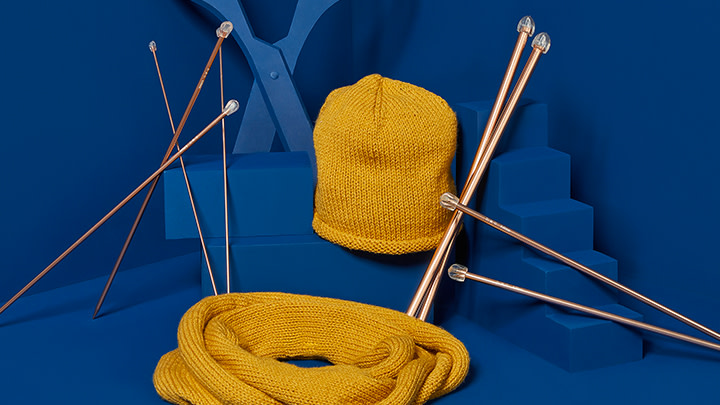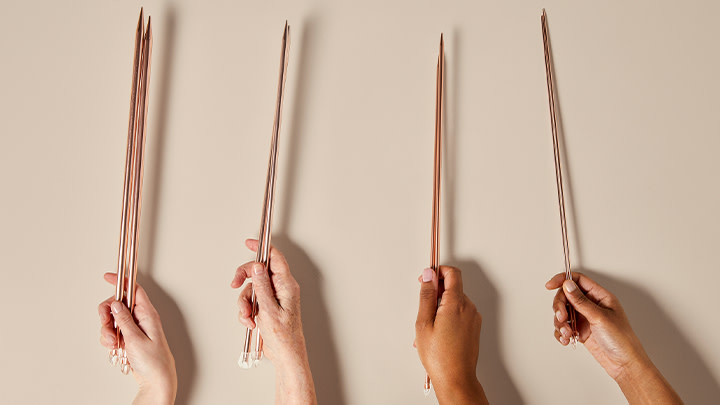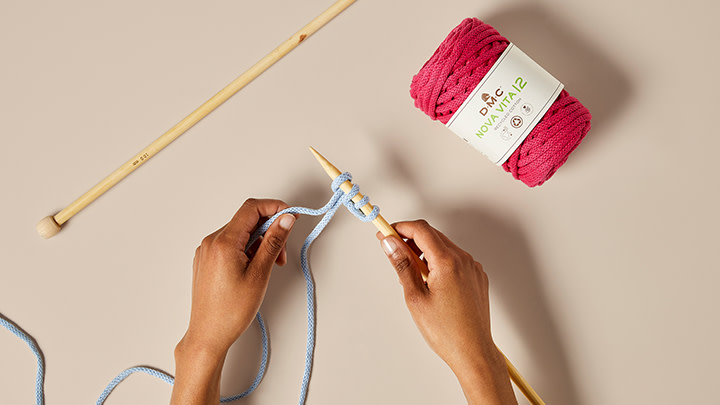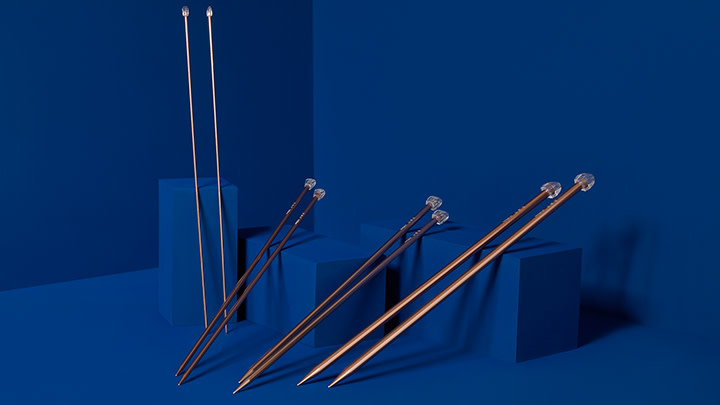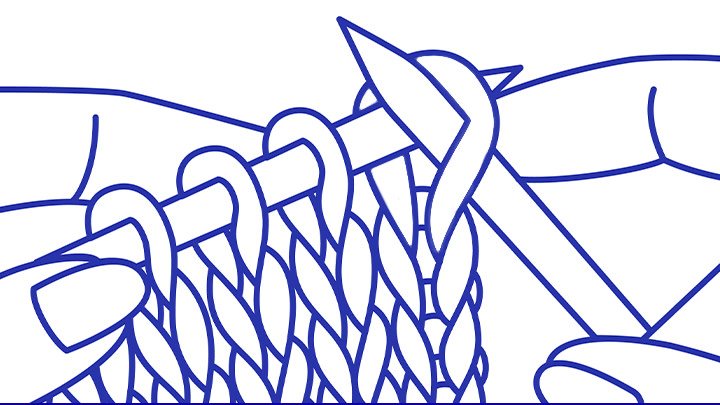A knitting chart is a visual representation of a knitting pattern as if you are looking at the right side of your knitted piece. Each little square represents a stitch, and each row of squares represents a row of knitting. If you’ve never looked at a knitting chart before they can look a little daunting but once you understand how they work they are easy to use. In this article we explain how to read them.
What Are Knitting Charts Used For?
Knitting charts are particularly helpful for colorwork, lace and cable patterns as they provide a quick and easy way to visualize how a knitting pattern is going to develop and what it will look like when it’s finished. It’s especially helpful if you are a visual learner and find images easier to understand than written instructions, or if you want to try a knitting pattern that is written in another language. Knitting patterns that are worked flat, backwards and forwards in rows will be represented by a chart that is followed by starting at the bottom right-hand corner. Right side rows will be worked from right to left, and wrong side rows will be worked from left to right. Charts for knitting patterns that are worked in the round are always worked from right to left, with every round worked, being a right side round.
Repeated Patterns
Knitting charts may depict only a small section of the overall pattern which you are then instructed to repeat a certain number of times. When you start at the beginning of a row, work all the stitches in the chart and then return to the start of the chart repeatedly until the row is complete. Placing stitch markers in between each pattern repeat, helps you to keep track of where you are in a row. The pattern may indicate to do the same with the rows of a chart.
Keeping Track
One of the great advantages of working from a chart is that you can easily keep track of where you are in the pattern by placing a sticky note or ruler underneath the row you are working on, and then moving it up as you progress.
Colorwork Charts
Knitting patterns that are worked in more than one color, such as intarsia or fair isle are often much easier to work from a chart instead of written instructions. Colorwork charts are clear illustrations of which shade of yarn should be used for each stitch. Sometimes the shapes will be outlined as shown in the chart below. Alternatively, the shades of yarn could be illustrated by symbols, or areas may be shaded gray.
Lace and Cable Charts
Symbols are used in charts that depict textured knitting techniques such as lace and cable. Before you start knitting, read through the key to the chart to make sure you understand what each of the symbols mean, paying special attention to symbols that involve several stitches. It’s also a good idea to look carefully at the row numbers on the chart to make sure that every row is depicted. Both cable and lace techniques often feature simple wrong side rows, perhaps just purling the whole row, or in the case of cabling, sometimes you are told to ‘keep in pattern’. To save space, some chart leave out wrong side rows and only show right-side rows. You will be able to recognize this by looking at the row numbering. If the chart rows read 1, 3, 5, 7… then wrong side rows are not included and you will need to remember to work them before moving to the next right side row. If the chart reads 1, 2, 3, 4, 5… then all rows, right side and wrong side, are shown. Knitting symbols are not universal, though often an empty square means to knit the stitch on a right side row, a dot or a dash means to purl on a right side row or knit on a wrong side row, and a Yarn Over or Yarn Forward will be represented by an O. Decreases are usually indicated by / or \ depending on which way the decrease will lean.
Cable charts feature symbols for cable turns. As cables are worked over more than one stitch, the symbols for cable turns are more than one stitch wide. For example, in the chart below, C4F is worked over four stitches - slip next 2 sts to front on CN, k2 then k2 from CN. Therefore, the symbol takes up four stitches on the chart.
We hope this article has helped you make sense of knitting charts and that you're excited to test out your new found knowledge.




